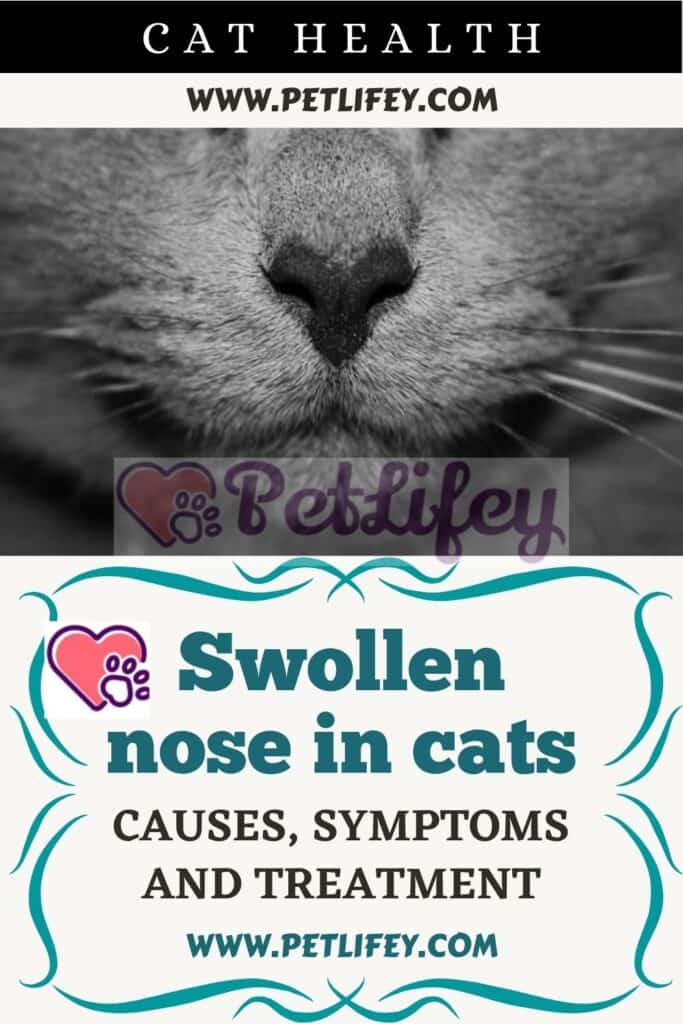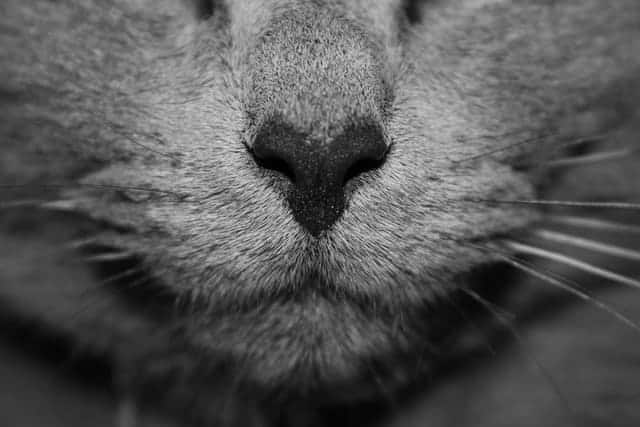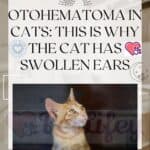
A swollen nose in cats is not a common condition but still not a normal situation. Let’s see what this circumstance can trigger in the feline.
As for all animals, even for the cat the nose is substantial as it is of fundamental importance for the sense of smell of the feline, one of its most developed senses. The cat, as we all know, has a hunter’s nature and instinct, without his nose he would lose this characteristic.
But it is precisely because of this instinct of his that he is likely to put himself in some dangerous situation, which can involve the nose and sometimes even the face. Certainly, however, we cannot blame only his hunting instincts, the reasons for which it is possible to see the swollen nose in the cat can be different. In the next paragraph we will find out what the other reasons for this condition in the feline may be.
Symptoms
In most of the times that this condition of a swollen nose occurs in cats, it is easy for other symptoms to come out together with it, very useful to help better identify the cause. These signs can be:
- the cat’s swollen face;
- cough;
- fever;
- nasal or ocular secretions;
- nasal congestion;
- wheezing;
- loss of appetite;
- conjunctivitis in cats.
We said that these symptoms are of fundamental importance, since associated with the cat’s swollen nose can help the veterinarian to establish a more correct diagnosis and establish an adequate treatment for it.
Causes of a swollen nose in cats
The causes of a swollen nose in cats as we said are different, below is a list of the possible origins of this problem:
- foreign bodies: the presence of foreign bodies in the feline’s nose can lead to a swollen nose situation in the cat. The cat, with its extreme curiosity and its hunting instinct, sticks its nose almost everywhere and finds itself inhaling plant thorns, dust or small objects, which then remain inside, consequently creating this swelling.
- abscesses: an abscess is an accumulation of pus that can present itself as a lump in the cat’s nose and therefore appear swollen or a sore nose if in the case it has opened; even a simple scratch can cause injury to the cat’s nose or an abscess that deforms the cat’s face;
- trauma: among the causes, given the cat’s nature, we certainly cannot exclude any fights between cats, which can generate scratches, bruises and trauma. In this case it will be inevitable that the nose can swell but it will also be easy for sores and blood loss to occur.
- inflammation from bites: our cat is an animal that wanders happily outside our houses, it is impossible to keep him at home, his desire to explore is too much, but it may happen that he may come across some insect that can be placed on his nose and consequently prick it. A wasp, a bee, a scorpion, a mosquito, a spider bite or even a tick (rarely) on the cat’s nose will automatically trigger an inflammatory reaction;
- blockage of the nasolacrimal duct: an obstruction due to secretion, stricture or foreign bodies, causing inflammation of the area;
- Allergies: it is not uncommon to see that in front of the presence of a food allergy the cat can swell its nose and even its face. This is in fact one of the main conditions in which this situation can occur, a reaction of the body that is triggered when it comes into contact with the allergen. Depending on the type of allergy, the inflammation will spread to one area or the other;
- Feline cryptococcosis: Cryptococcosis in cats is caused by the fungus Cryptococcus neoformans or Cryptococcus catti. The cat becomes infected by inhaling this fungus present in the soil, in the feces of birds and in some plants. This infection generates nasofacial inflammation, accompanied by ulcers and nodules in the region. Generates in the animal the so-called “clown nose” which is formed due to the characteristic swelling of the nose and inflammation of the nasal region, associated with sneezing, runny nose and enlarged regional lymph nodes (lumps in cat’s neck). The treatment of this disease is quite long and is based on itraconazole, fluconazole and ketoconazole. And where there are injuries to the cat’s nose, topical and / or systemic antibiotic treatments should be prescribed, along with local cleaning and disinfection.
- viral diseases: also causing inflammation of the nose, sneezing and even wounds and scabs in the cat’s nose, can be viral diseases such as: feline AIDS virus (FIV), feline leukemia (FeLV), herpes virus or the calicivirus.
Diagnosis and treatment of a swollen nose in cats

Fortunately, establishing a diagnosis is quite simple, as we previously mentioned, the swollen nose in the cat always travels together with other more specific symptoms that give the vet the opportunity to understand the real reason why it is swollen.
Having established the diagnosis behind it, since there is a so-called primary cause, the doctor will go to deal with this (disease and conditions that we mentioned in the previous paragraph) and then intervene on the swollen nose of the cat.
Always remember to never self-medicate our pet, we could only make it worse. In addition, experts strongly advise not to use the same drugs that are used to treat human diseases.






